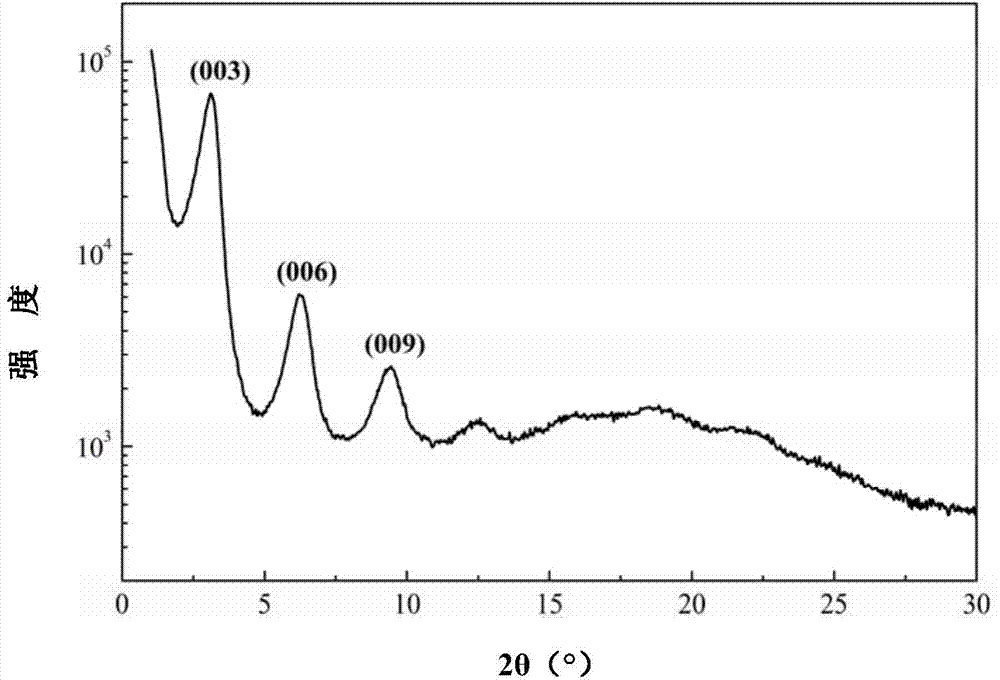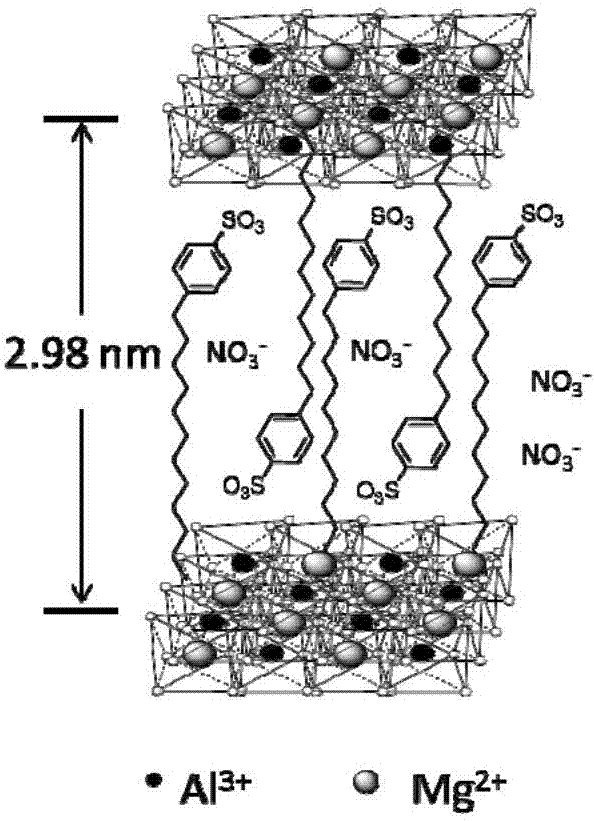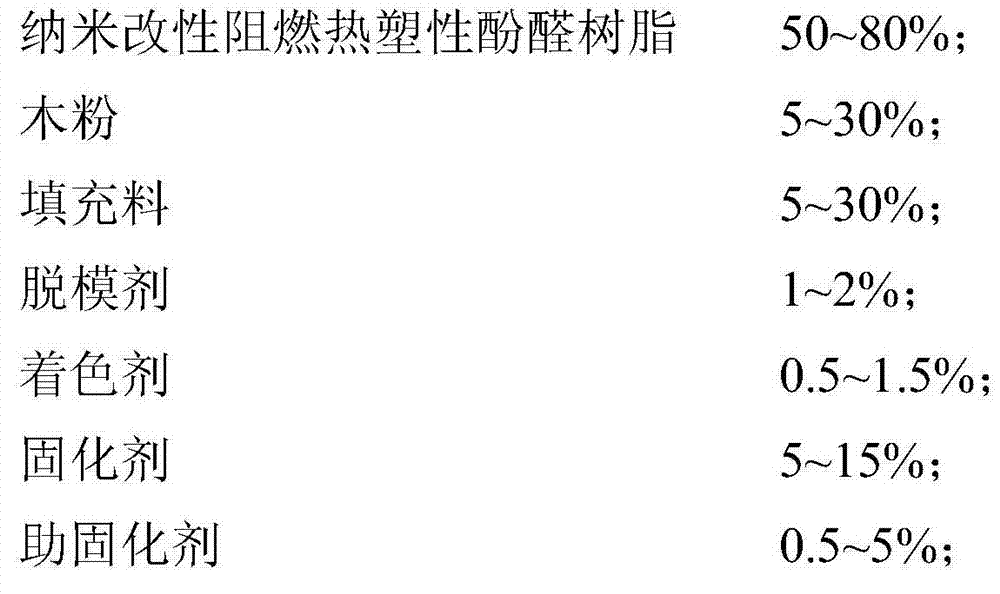Nano-modified flame-retardant phenolic injection molding material and preparation method thereof
A nano-modification and injection molding technology, which is applied in the field of phenolic injection molding, can solve problems such as high production cost, impact on injection molding performance, and application field limitations, and achieve outstanding flame retardant effects, improved dispersion performance, and low pollution.
- Summary
- Abstract
- Description
- Claims
- Application Information
AI Technical Summary
Problems solved by technology
Method used
Image
Examples
Embodiment 1
[0041] Slowly add 0.2mol / L magnesium nitrate and 0.1mol / L aluminum nitrate mixed solution (100ml) dropwise into 500mL sodium dodecylbenzenesulfonate solution with a concentration of 0.1mol / L at room temperature, and keep the pH of the system at 9-11, aging at 60°C for 20 hours after the dropwise addition, filtering and washing, the obtained white powder is the nano-modified magnesium-aluminum composite flame retardant. The reaction yield was 92%.
[0042] figure 1 The X-ray diffraction pattern of the nano-modified magnesium-aluminum composite flame retardant prepared for this example, it can be seen from the figure that the first-order diffraction peak (003) appears at 3.10°, and the corresponding layer spacing is 2.84nm, which is indeed Modifiers at the nanoscale.
[0043] figure 2 Schematic diagram of the structure of the nano-modified magnesium-aluminum composite flame retardant prepared for this example, the intercalation agent is mainly sodium dodecylbenzenesulfonate ...
Embodiment 2
[0049] Slowly add 0.1mol / L magnesium nitrate and 0.05mol / L aluminum nitrate mixed solution (50ml) dropwise into 500mL sodium dodecylbenzenesulfonate solution with a concentration of 0.05mol / L at room temperature to keep the pH of the system at 9-11, aging at 80°C for 15 hours after the dropwise addition, filtering and washing, the obtained white powder is the nano-modified magnesium-aluminum composite flame retardant. The reaction yield was 95%.
[0050] 20 grams of the nano-modified magnesium-aluminum composite flame retardant prepared in this implementation and 180 grams of thermoplastic phenolic resin (PF8062 thermoplastic phenolic resin of Zhejiang Jiamin Plastic Co., Ltd.) were melt-blended on a three-roller machine (drum temperature 90-120° C. ), fully mixed for 30 minutes to make nano-modified flame-retardant thermoplastic phenolic resin B.
[0051] Mix each component according to the weight percentage in Table 2, roll on a double-roller mill, and then pulverize to obt...
PUM
 Login to View More
Login to View More Abstract
Description
Claims
Application Information
 Login to View More
Login to View More - R&D
- Intellectual Property
- Life Sciences
- Materials
- Tech Scout
- Unparalleled Data Quality
- Higher Quality Content
- 60% Fewer Hallucinations
Browse by: Latest US Patents, China's latest patents, Technical Efficacy Thesaurus, Application Domain, Technology Topic, Popular Technical Reports.
© 2025 PatSnap. All rights reserved.Legal|Privacy policy|Modern Slavery Act Transparency Statement|Sitemap|About US| Contact US: help@patsnap.com



